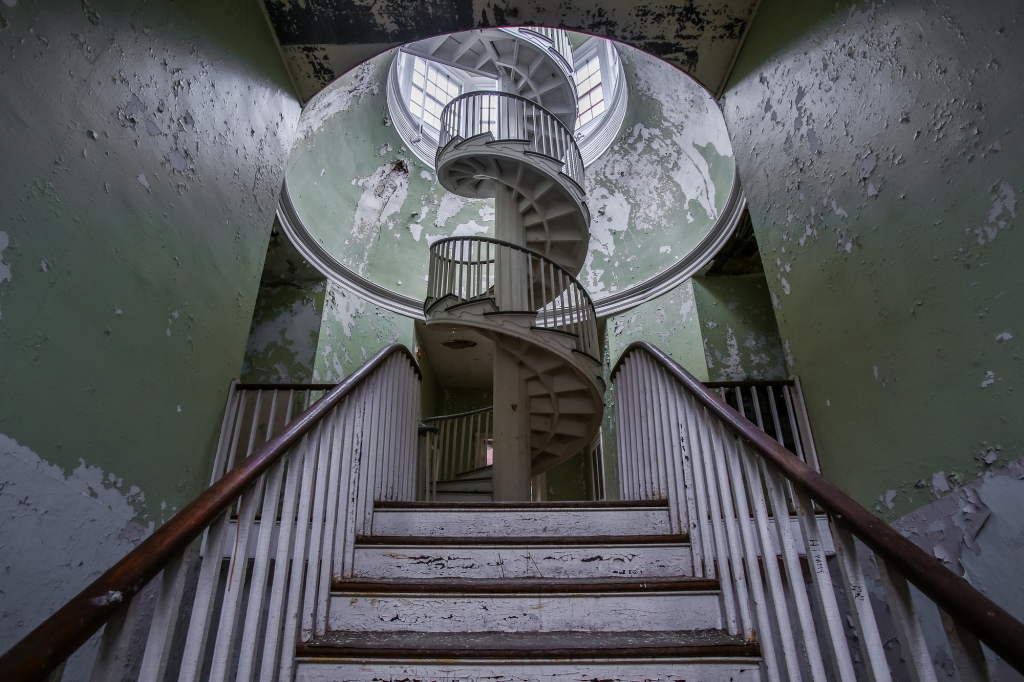Asylums: Exploring the Haunting History of Mental Health Institutions
Welcome, urban explorers! Today, we delve into the fascinating and haunting world of asylums. These imposing structures have long captivated our curiosity with their mysterious history and eerie ambiance. Join us as we take a journey through time to uncover the secrets that lie within these forgotten walls.
1. A Brief Overview
Asylums, also known as mental health institutions or psychiatric hospitals, were established in the 18th and 19th centuries to provide care for individuals suffering from mental illnesses. Initially intended to be places of compassion and healing, many asylums soon became overcrowded, understaffed, and overwhelmed by patients.
2. The Rise of Asylum Architecture
The architectural design of these institutions played a significant role in shaping how patients were treated. Early asylums often followed an architectural style known as “Kirkbride Plan,” named after its creator Thomas Story Kirkbride. This design aimed to create a therapeutic environment by incorporating natural light, ventilation systems, sprawling grounds, and peaceful surroundings.
3. Dark Beginnings
However noble their intentions may have been initially, some early asylums developed a dark reputation due to inadequate funding and lack of understanding regarding mental health conditions. Patients often endured harsh treatments like lobotomies or electroshock therapy – practices now considered unethical.
4. Uncovering Forgotten Stories
Exploring abandoned asylums is like stepping back in time; each room tells a story waiting to be discovered. From decaying patient records left behind to remnants of treatment equipment scattered about—every artifact hints at the lives lived within these walls.
5. Urban Legends & Ghostly Tales
It comes as no surprise that abandoned asylums are often associated with ghost stories and urban legends—a product of their unsettling history combined with popular culture’s fascination with horror narratives. While such tales add an air of mystique, it’s important to remember that they are just stories.
6. Documentation and Preservation
Urban explorers have played a crucial role in documenting the state of abandoned asylums. Their photographs, videos, and firsthand accounts help preserve these forgotten spaces before they crumble away or get repurposed.
7. Ethical Considerations
Exploring asylums raises ethical questions about privacy, respect for the deceased, and preserving history without causing harm. It is essential to approach these sites with sensitivity and adhere to local laws regarding trespassing or entering restricted areas.
8. Mental Health Stigma
As we explore the history of asylums, it’s vital to reflect on society’s attitude towards mental health at different times. The mistreatment endured by patients within these institutions highlights the progress made in understanding mental illness and combating stigma today.
9. Transition Towards Community-Based Care
In recent decades, there has been a shift from institutionalizing individuals with mental illnesses towards community-based care models. As a result, many former asylums now sit empty or have been repurposed for other uses.
10. Historical Significance
Exploring abandoned asylums allows us to confront our past and recognize how far we’ve come in terms of our understanding and treatment of mental health conditions. These buildings serve not only as historical landmarks but also reminders of our collective responsibility towards compassionate care for those struggling with mental illness.
11. The Beauty in Decay
Despite their haunting presence, abandoned asylums possess an undeniable aesthetic appeal—nature reclaiming its territory through cracked walls and overgrown gardens creates unique photo opportunities for urban explorers seeking to capture the beauty within decay.
12: Lessons Learned
As we conclude our exploration into the world of asylums, let us remember the lessons hidden behind their crumbling facades: compassion triumphs over cruelty; knowledge heals where ignorance harms; and above all else – empathy should guide our understanding of mental health.
In the end, abandoned asylums are not just relics of the past; they serve as reminders of our ongoing journey towards a more compassionate and inclusive society. So, step cautiously but curiously into these forgotten halls, and let their stories echo in your mind long after you leave.

Leave a comment